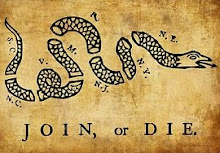Communications Failure
Whenever, there is a natural disaster the first thing to break-down is communications. Primarily telephones and cell phones. These systems are not equipped to handle extremes in usage like those encountered during emergencies. A busy line or lack of service availability is not only frustrating, but can be dangerous.
What should you do if you need to call the fire department, ambulance, or the police? Frankly, you're out-of-luck!
Alternative Communication
So what can you rely on for emergency communications? There is a time-tested alternative. Short-wave radios fit the bill. A citizen's band radio (CB) is OK but the HAM radio may be better.
What's the Difference?
They both have limitations. A CB radio has limited broadcasting capabilities. They are limited to a maximum wattage (power rating) of only 5 watts. Amateur radios can be over 1,000 watts in power. It all depends on the band and frequency. Usually more power usually means more distance and stronger signals.
CB radios rely on line-of-sight for connections. So do several amateur bands, including 2 meter, 6 meter, and 70 cm.
What's Best?
If you live in a relatively flat area a CB radio may be sufficient. They can transmit signals 5-6 miles. However, if you live in the mountains or have hills, amateur radios may be the best answer. The 2 meter, and 6 meter radios can reach two way distances of 30 miles and occasionally much further!
Catch 22
Technically you need a federal license to operate either CB or HAM radios. However, most CB radio operators don't bother getting a license. The FCC isn't too strict about CB radio operations. On the other hand, if you want to operate on the HAM frequencies, a federal license is a must.
Amateur Licenses
There are three types or classes of amateur licenses; Technical, General, and Extra. The Technical license is the lowest class license with the fewest privileges. It's all you need to be able to broadcast over 30 miles.
All three licenses require that you pass a written test. The Technical license test is 35 multiple choice questions. A passing score is above 70% and there is no Morse Code requirements. You can get study guides for all licenses. Just Google "Ham radio license manuals" for more details.
If you take the time and effort, you can get a Technical license. This could save your life in times of emergency or natural disaster!
Friday, September 10, 2010
Subscribe to:
Post Comments (Atom)

No comments:
Post a Comment